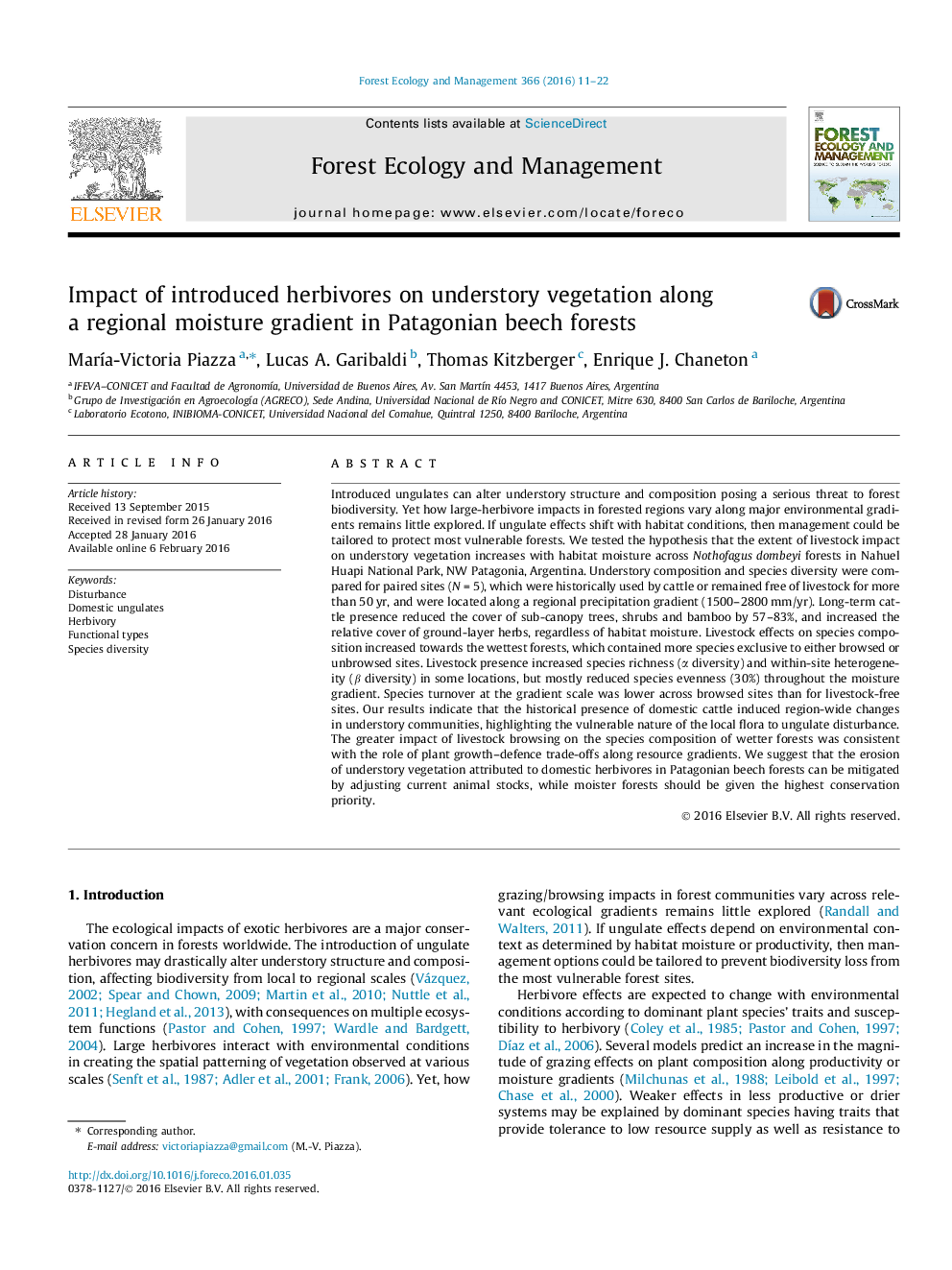| کد مقاله | کد نشریه | سال انتشار | مقاله انگلیسی | نسخه تمام متن |
|---|---|---|---|---|
| 86033 | 159159 | 2016 | 12 صفحه PDF | دانلود رایگان |
• Introduced domestic ungulates altered beech forest understories on a regional scale.
• Browsing reduced woody and bamboo cover throughout a broad moisture gradient.
• Understorey cover was more evenly distributed among species in livestock-free stands.
• Livestock impact on species composition increased towards wetter forest stands.
• Ungulate stocks should be managed to reverse current trends of forest degradation.
Introduced ungulates can alter understory structure and composition posing a serious threat to forest biodiversity. Yet how large-herbivore impacts in forested regions vary along major environmental gradients remains little explored. If ungulate effects shift with habitat conditions, then management could be tailored to protect most vulnerable forests. We tested the hypothesis that the extent of livestock impact on understory vegetation increases with habitat moisture across Nothofagus dombeyi forests in Nahuel Huapi National Park, NW Patagonia, Argentina. Understory composition and species diversity were compared for paired sites (N = 5), which were historically used by cattle or remained free of livestock for more than 50 yr, and were located along a regional precipitation gradient (1500–2800 mm/yr). Long-term cattle presence reduced the cover of sub-canopy trees, shrubs and bamboo by 57–83%, and increased the relative cover of ground-layer herbs, regardless of habitat moisture. Livestock effects on species composition increased towards the wettest forests, which contained more species exclusive to either browsed or unbrowsed sites. Livestock presence increased species richness (α diversity) and within-site heterogeneity (β diversity) in some locations, but mostly reduced species evenness (30%) throughout the moisture gradient. Species turnover at the gradient scale was lower across browsed sites than for livestock-free sites. Our results indicate that the historical presence of domestic cattle induced region-wide changes in understory communities, highlighting the vulnerable nature of the local flora to ungulate disturbance. The greater impact of livestock browsing on the species composition of wetter forests was consistent with the role of plant growth–defence trade-offs along resource gradients. We suggest that the erosion of understory vegetation attributed to domestic herbivores in Patagonian beech forests can be mitigated by adjusting current animal stocks, while moister forests should be given the highest conservation priority.
Figure optionsDownload as PowerPoint slide
Journal: Forest Ecology and Management - Volume 366, 15 April 2016, Pages 11–22
